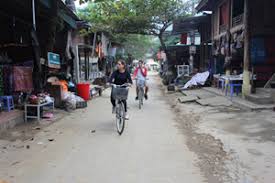
(HBO) - In the first 6 months of 2019, Mai Chau district welcomed more than 180,000 visitors, including 77,621 international visitors and 104,438 domestic visitors. Total revenue from tourism reached 70,1 billion VND.
Since the announcement of the planning of Mai Chau National Tourist Site, the number of investment projects on tourism has increased. Visitors also increased.
In particular, with 7 community tourism sites including: Lac hamlet (Chieng Chau commune), Buoc hamlet (Tat Healthy commune), Van and Pom Coong hamlet (Mai Chau town), Hich hamlet (Mai Hich commune), Pa Co hamlet (Pa Co commune), Hang Kia hamlet (Hang Kia commune) has contributed to the economic restructuring, creating jobs and raising incomes for the people.
A diverse chain of eco-tourism and resort destinations concentrated in Hoa Binh city and the districts of Tan Lac, Da Bac, and Luong Son… Along with the launch of several key high-quality resort tourism projects, these developments have reshaped the landscape and enhanced the appeal of Hoa Binh as a travel destination.
Boasting diverse terrain, a mild climate, and rich natural resources, Cao Phong district is increasingly asserting its place on Vietnam’s tourism map, attracting both domestic and foreign visitors. The district is renowned for its stunning landscapes, majestic mountains, a crystal-clear hydropower lake, and the unique cultural identity of local ethnic groups.
With its pristine landscapes, unique cultural heritage of Muong ethnic minority, and an expanding range of visitor experiences, Tan Lac district of Hoa Binh has fast become a captivating destination for both domestic and international tourists.
Until now, Sung village in Cao Son commune, Da Bac district remains the only Dao ethnic community in Hoa Binh province to develop a community-based tourism model. Beyond its untouched natural landscapes, cultural identity serves as the cornerstone attraction for visitors.
Alongside the diverse cultural identities of the Kinh, Muong, Tay, Thai, Dao, and Mong ethnic people, Hoa Binh province is also renowned as the "capital" of the northwestern Vietnamese cuisine, offering unique and distinctive dishes. At festivals, during Lunar New Year (Tet), or on significant family or community occasions, special dishes are prepared, leaving a lasting impression on visitors.
A Phong Linh (Yellow Tabebuia) flower garden in Thang village, Thach Yen commune, Cao Phong district is currently in full bloom, drawing a large number of visitors.


